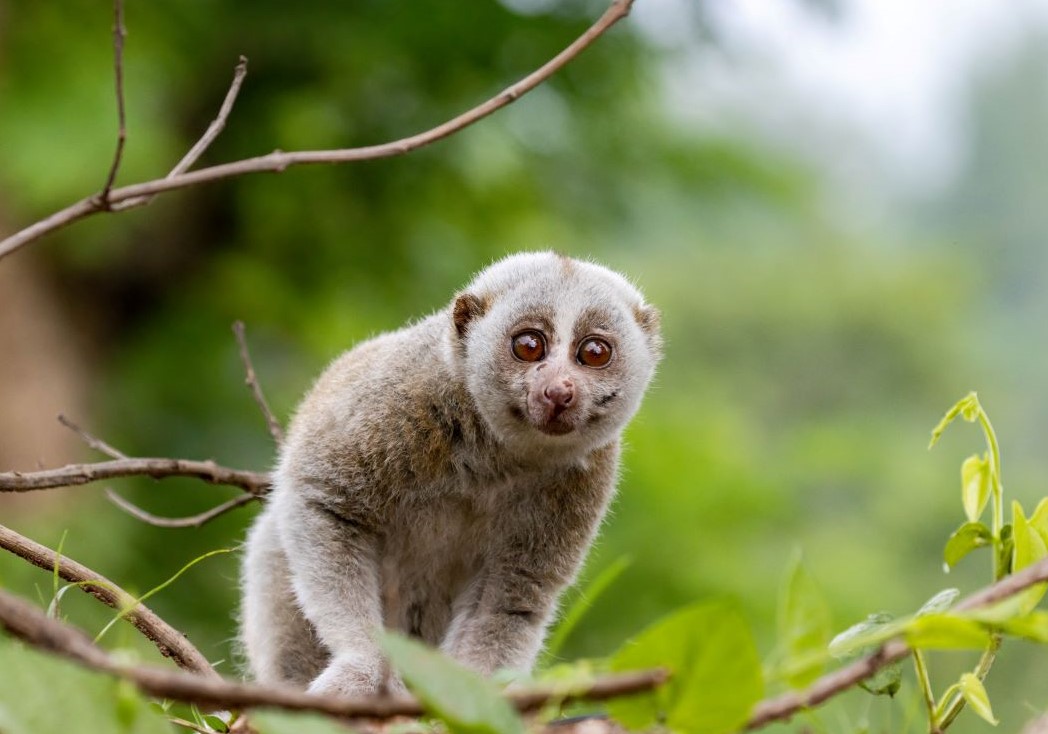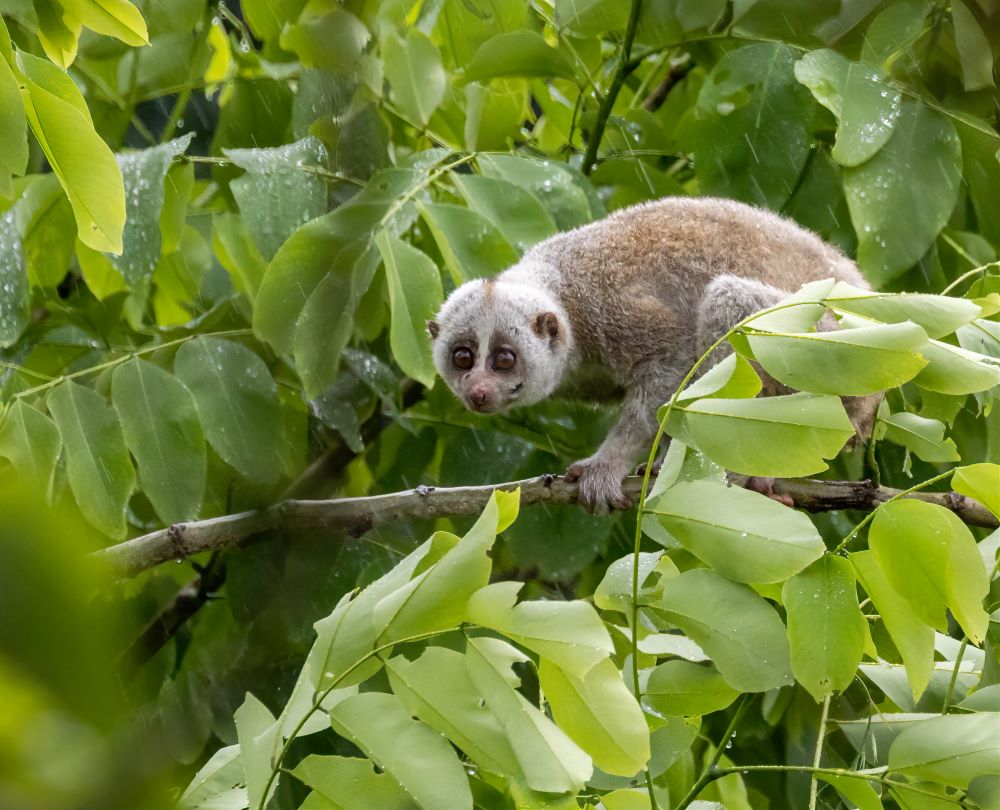Bengal Slow Loris (Nycticebus bengalensis) is a native primate species in the Indian subcontinent and Indochina. Till 2001, this primate was considered as a subspecies of Sundra Slow Loris. But subsequently it has been recognized as an independent species. Its geographical range is the largest among all the other Slow Loris species. The habitat of Bengal Slow Loris extends from Vietnam to China. But in India, this primate species is found only in the North eastern part of the country. The name ‘Slow Loris’ suggests its basic behavior. This nocturnal mammal has become extremely slow in the broad daylight. Bengal Slow Loris is an excellent seed disperser and pollinator of night blooming plants which helps in natural balancing of the ecosystem.

Size and Diet
Bengal Slow Loris is the largest among all the slow loris species. An adult is 10 – 15 inches long from tail to head and weighing about 1-2.1 kg. Like other slow loris species, Bengal Slow Loris has also a wet nose, round head, big and bright eyes and small ears. This primate species is carnivorous. It mainly feeds on fruits, insects, snails and gum, resin and sap of trees etc. During the winter season, it depends exclusively on gums, saps and resins. A Bengal Slow Loris lives in the wild up to 20 years.
Habitat
Bengal Slow Loris inhabits in tropical and subtropical rainforests. This tree dwelling mammal prefers foraging on dense canopies. It is seen in all types of trees; but it mostly prefers the gum and sap releasing trees for dwelling.
Is Bengal Slow Loris venomous?
Bengal Slow Loris is the only known venomous primate species in the world. Apart from it, there are 5 more other venomous mammal species recognized so far by the scientists. Bengal Slow Loris releases flesh-rotting venom in their bites, which can be fatal to human body. It produces toxic substances from the glands of their elbow which is secreted with sweat. This venomous substance when licked off, the gland becomes activated by saliva and transferred in their bites. In recent research, it is revealed that the most frequent recipients of its venomous bites are the other slow loris species. Bengal Slow Loris is normally territorial in nature and frequently settles disputes with other individuals with its venomous bites. This is one of the unique characteristics of this amazing primate species.
Global Threat
The International Union for Conservation of Nature (IUCN) marked this species as an Endangered species in their Red list. The Bengal Slow Loris is a Schedule I animal in India under the Wildlife Protection Act, 1972. The species under Schedule I accords the highest degree of protection under Indian law. Habitat loss for Jhum cultivation, expansion of tea gardens etc. are some of the major threats for this primate species. Moreover, this beautiful species is also under the threat of hunting. There is a belief among the tribal people of North eastern India that the body parts of this mammal have a special healing power and can be used as medicine for healing various ailments. Therefore, this species is often hunted by the local people. Some sources say that Bengal Slow Loris is traded in many parts of Asia as an exotic pet. For such reasons, the population of Bengal Slow Loris is rapidly declining.

Conservation
In many countries of its range, Bengal Slow Loris is found only in the protected areas. In the North eastern part of India, this primate is found in 43 protected areas. Many countries like India, Vietnam and Myanmar are taking extensive measures for conservation of this endangered species. Hunting and international trade of this primate is strictly prohibited in many countries.
Also read BIRDS OF ASSAM
Read more articles HERE
2 thoughts on “Bengal Slow Loris: A Venomous Primate”